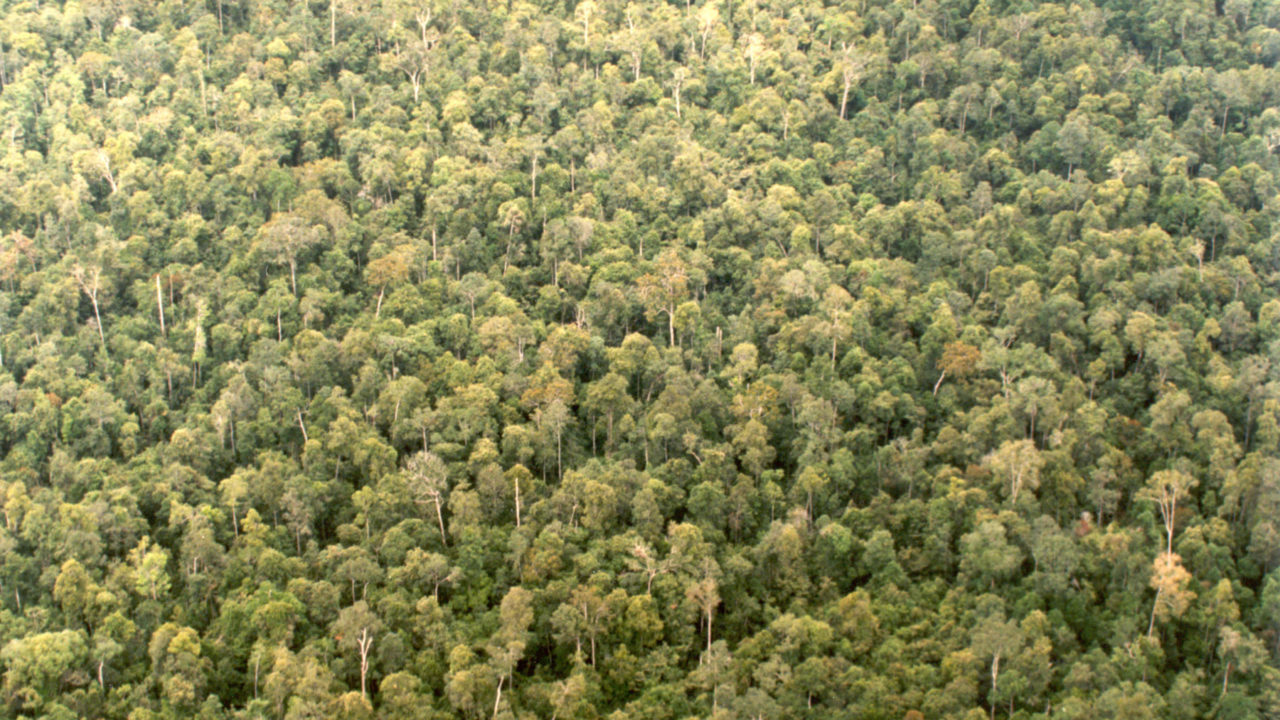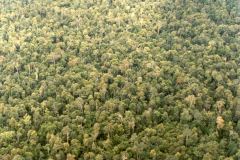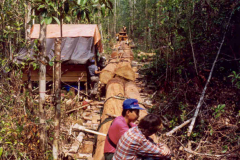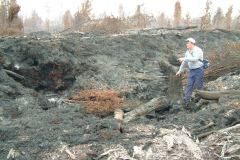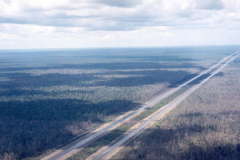As I grow older, I see some things repeating themselves. It is as if human society never learns from history the consequences of certain actions. This is certainly true for peatlands and peat. When I spent some university study leave time in Southeast Asia more than 30 years ago I had my first encounter with tropical peatland in Peninsular Malaysia that was starting to gear up its development of plantation agriculture on peatland for a range of crops, especially pineapple but also oil palm and sago.
I was so horrified I sent a letter to the Malaysian New Straights Times newspaper that was printed in December 1988 with the headline “Peatlands are vital to Ecological System”. I was so alarmed at the suggestion of commercial exploitation of this important natural resource that I set out my case for why it should not happen. “These are valuable natural resources that support forest trees and a large diversity of animals and plants that make up unique tropical rain forest”.
How naive I was and when I moved on to establish major research projects on peatland in Indonesia, I made the same mistake. I soon learned my lesson, however, and separated my scientific mind from my impulsive heart! I focussed attention on one of the last remaining near natural areas of peat swamp forest in the upper catchment of the Sabangau River in Central Kalimantan where peatland covered more than 600,000 hectares, teemed with wildlife and home to one of the largest remaining populations of orang utan.
My colleagues and I carried out ecological, hydrological and microclimatological research over a five-year period with almost no financial support until confronted with disastrous land development followed by fire. This state-sponsored irresponsible management, called the Mega Rice Project, was the brainchild of Indonesia’s President Suharto because of his country’s failure to achieve self-sufficiency in rice production on the islands of Java and Madura where highly productive rice fields had been converted progressively to commercial and industrial use. My funding applications started to be successful because I happened to be in the right place at the wrong time and my fourteen institute partners in SE Asia and the EU were able to monitor, assess and publicise the impact of the MRP and other examples of unsustainable management on this fantastic ecosystem.
Suharto, and it seems also his advisers, knew nothing about peatland or peat and the project failed to grow any rice at all but in its wake it left a trail of disasters, including deforested landscape, burning tree debris and peat, immigrants with no work, ethnic conflict, and pollution of rivers and the air, the latter spreading across the SE Asian region. Suharto was toppled in 1988 and his successor abandoned the Mega Rice Project, but damage was done since its biodiversity was lost forever and the fire and drought ravaged peatland has emitted carbon dioxide to the atmosphere every day as it decomposes and subsides.
Fast forward 20 years to 2019 and what do we find? Did the ‘powers that be’ heed our advice and practice responsible management of tropical peatland? No. In this time the area of peat swamp forest has decreased drastically. A study by Miettinen et al (2016)[1] revealed that in 2015 only 29% (4.4 million hectares) of peatland in SE Asia supported forest, much of which was degraded. Managed land cover types occupied 50% (7.8 Mha), mostly industrial plantations and smallholder farms. Most industrial plantations on peat are of oil palm, followed by paper pulp wood plantations. These have continued to increase in area and destroy the environment.
These peatland use changes have been accompanied with massive decreases in wildlife habitat, biodiversity losses and species extinction. More insidious and dangerous to life on planet earth are the massive emissions of greenhouse gases, especially carbon dioxide, but also chemical and particulate pollutants that are having drastic effects on human health throughout SE Asia and beyond’. Indonesia is now regarded as the third largest emitter of greenhouse gases after China and India. Indonesia has the fourth largest population of all countries in the world (270 million; predicted 351 million by 2050) with many people to feed, a high population increase rate, high level of poverty, especially in peatland areas. This is Indonesia’s dilemma. It must provide food and other resources to an increasing population while reducing greenhouse gas (GHG) emissions by up to 40%. On the one hand peatland is the only undeveloped land but at the same time it is the principal source of GHG emissions. It is a lose-lose situation and Indonesia are paying the price for irresponsible peatland management over the last 20 years.
Professor Jack Rieley
University of Nottingham
Member of IPS Executive Board
Coordinator of IPS Expert Groups “Tropical Peatland Roundtable” & “Peatland Conventions and International Affairs”
[1] Miettinen, J., Shi, C. & Liew, S.C. (2016) Land cover distribution in the peatlands of Peninsular Malaysia, Sumatra and Borneo in 2015 with changes since 1990. Global Ecology and Conservation, 6:67-78
All images © Jack Rieley

